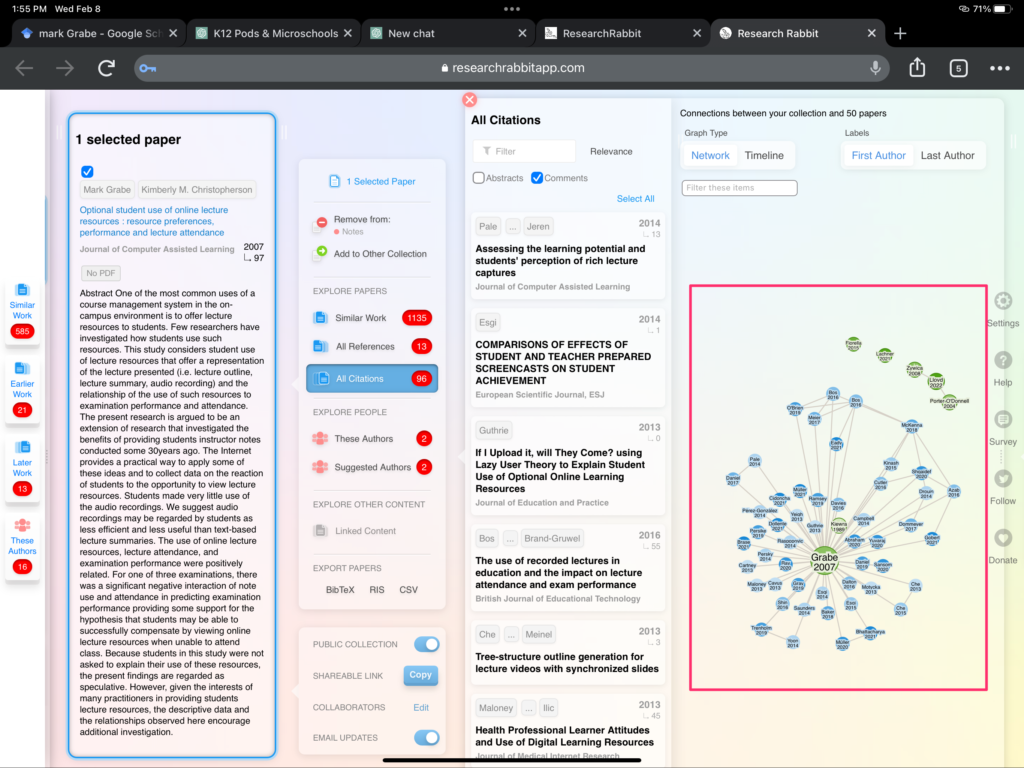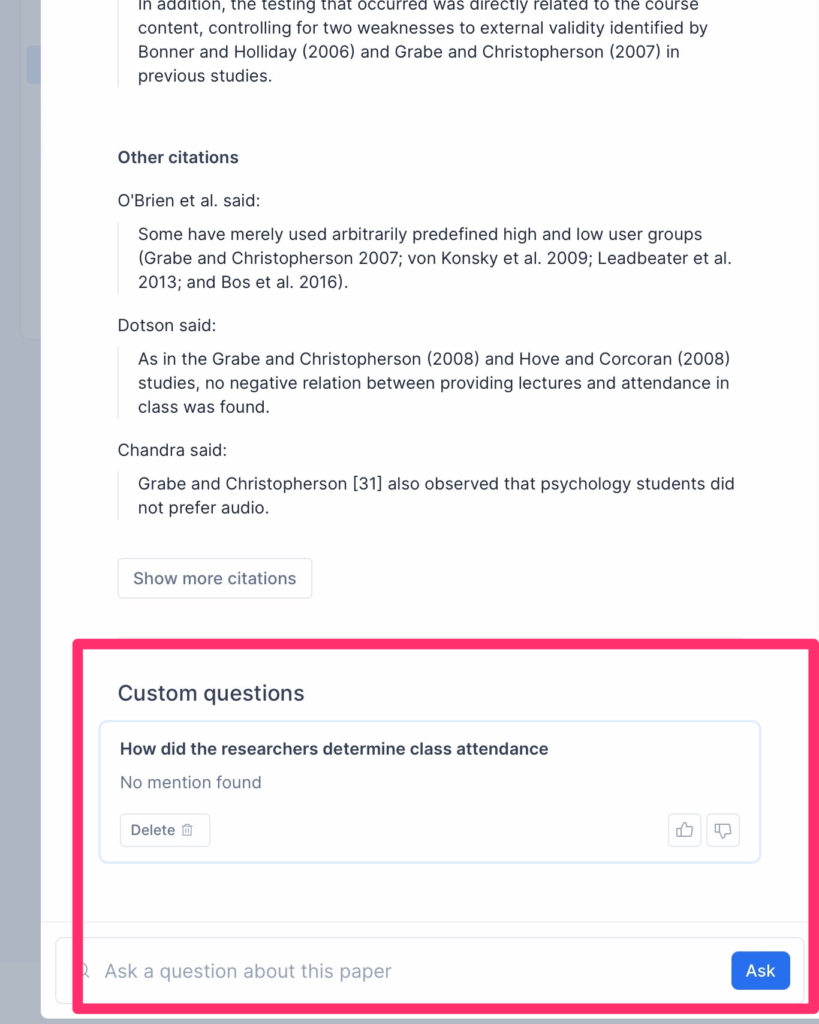I can identify a half dozen or fewer themes that have captivated my professional imagination over the 40+ years of my academic career. So many of these themes often were at the core of specific research interests and my applied work. Sometimes a theme was something I found interesting at the time it was first encountered, but I saw no practical way the idea could be implemened. Sometimes this situation has changed. The best example of this “opportunity discovered” comes from my original interest in individual differences in the rate of learning and my later interest in technology and how the affordances of technology could make responding to differences practical.

The concept of aptitude is a topic educational psychologists teach. We may talk about issues associated with aptitude tests and perhaps biases in these tests as measures of aptitude or perhaps problems in the way test results were applied. Intelligence tests make perhaps the best example of an attempt to estimate general aptitude. Aptitude tests are about prediction and intelligence scores are predictive of achievement. Past achievement may be a better predictor of future achievement, but sometimes there is value in breaking down the components that contribute to achievement differences. Aptitude as an estimate of potential does not guarantee that potential will be realized and this difference, if real, is worth investigating.
As I said originally, I am interested in individual differences in the rate of learning and the practical consequences of these differences in rate under different classroom circumstances. I can trace my personal interest back to the theoretical work of Carrol (1963, 1989) which proposed what I interpreted as an optimistic model of learning. The model proposed that most individuals could learn most things if provided enough time. Carroll then differentiated the time required the time provided and then broke time required down according to variables that were influential. Aptitude proposed that aptitude was a way of understanding the time required under ideal conditions of optimal instruction and the presence of relevant existing knowledge.
I saw a connection to the notion of IQ which few seemed to make. The classic representation, IQ=MA/CA, is really about time and rate of learning. CA (chronological age) is the time available for learning and MA (mental age) is really how much has been learned estimated as the average knowledge of others of a given age. Hence MA/CA is rate of learning. The amount of general knowledge that has been acquired relative to what is typical is one way to estimate this rate. It is problematic in practice because it assumes equal opportunity which is of course idealistic.
A different way to estimate rate of learning might be to measure it directly and this is possible with various forms of individualized instruction. I remember the time when individualization was called programmed instruction and was accomplished using sequenced paper materials (see Yaeger). For example, I remember a reading comprehension implementation based on a box of cards with short reading passages and related questions that reflected different levels of text complexity. I remember this as an SRA reading product. The box of cards was based on a color scheme representing each level (e.g., brown cards, green cards, orange cards) and there were multiple cards at each level. Students would start at a common level, read a card, and attempt the related questions. If they obtained an established score, they were advanced to the next level. If not, they would take a different card of the same color and try again. Students would progress at different rates and the difference in time required to advance from level a to level could be used as one way to estimate reading aptitude.
There are now multiple technology-supported systems (e.g., Kahn Academy) based on a similar model (I refer to such approaches as mastery learning after the use of this term by Bloom, and Keller in the late 1960s).
Rate of learning could also be impacted by the presence or absence of relevant background knowledge. More recently, Kahn (Kahn Academy) has described this as the problem of Swiss cheese knowledge. Do students have the relevant prerequisites for acquiring a given new skill or concept?
How little variability in the rate of learning would exist given ideal instruction and the mastery of prerequisites has become an interesting question. To me, this seems similar to asking the question if there are really differences in the theoretical notion of intelligence or are the individual differences we observed due to differences in motivation, background knowledge, and instructional quality.
Why does it matter? I think it matters because educators and on a different level our models of education must deal with individual differences. However conceptualized, every teacher must make decisions about the rate of presentation that slows down the rate at which some students could learn and moves too fast for other students. The reality of aptitude as differences in rate of learning is there whether we choose to ignore it or not. Estimates of this variable range from 3:1 to 10:1 (Arlin). I liked to pick 5:1 and proposed to future teachers that some of their students would “get it” during their class on Monday and suggest they would have to work on the same concepts for the rest of the week to get most of the students to the same place. What should they do between Monday and Friday?
I would suggest that techniques have been available to provide a solution since the late 1960s. Mastery learning proposes to create settings that address differences in background knowledge by focusing on assuring students progress when ready and not so much the calendar says it is time to begin the next unit. My way of describing the goal would be to say the goal is to reduce the variability in time required to the bare minimum required by differences in aptitude by addressing differences in background knowledge and moving ahead at a rate individual students can handle reducing their frustration at not being able to succeed at meeting learning goals.
I see two practical ways to accomplish an approach of this type – tutoring and technology. Tutoring is very effective in meeting individual student needs, but expensive. Technology provides a more cost effective approach and offers advantages in content presentation, evaluation of understanding, and record keeping over early implementations of mastery learning. Technology can free teachers from having to take total responsibility for these functions and to provide more time to function as an individual or small group tutor. More on some of these ideas in future posts.
Related references:
Arlin, M. (1984). Time variability in mastery learning. American Educational Research Journal, 21(1), 103-120.
Arlin, M. (1984b). Time, equality, and mastery learning. Review of Educational Research, 54(1), 65-86.
Bloom, B. S. (1968). Learning for Mastery. Instruction and Curriculum. Regional Education Laboratory for the Carolinas and Virginia, Topical Papers and Reprints, Number 1. Evaluation comment, 1(2), n2.
Bloom, B. S. (1974). Time and learning. American psychologist, 29(9), 682-688.
Carroll, J. B. (1963). A model of school learning. Teachers college record, 64(8), 1-9.
Carroll, J. B. (1989). The Carroll model: A 25-year retrospective and prospective view. Educational researcher, 18(1), 26-31.
Keller, F. S. (1968). Goodbye teacher… Journal of Applied Behavior Analysis Vol. 1, pg. 79-89.
Khan, S. (2012). The one world schoolhouse: Education reimagined. Twelve.
Yeager, J. L., & Lindvall, C. M. (1967). An exploratory investigation of selected measures of rate of learning. The Journal of Experimental Education, 36(2), 78-81.
![]()



You must be logged in to post a comment.